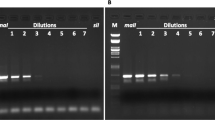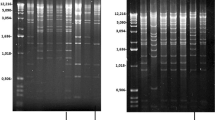Abstract.
We studied a mutant strain of Drosophila subobscura, in which 80% of the mitochondrial genomes (mtDNA) have lost over 30% of the coding region. The mutation is stable and is transmitted identically to offspring. The putative role of the mutant nuclear genome in the production of rearranged mtDNA was investigated using reciprocal crosses, to place the mitochondria of the wild strain in a mutant nuclear context. Nested PCR was used to screen for rearrangements in different regions of mtDNA; and rearrangements were detected in some individuals from the F6 generation. The frequency of these deleted mtDNAs then increased progressively in the population; and they were present in nearly all individuals in the F11 generation. They were not transmissible. Direct repeats were present at the deletion boundaries. These mutated genomes disappeared on reversion to a wild-type nuclear genome. Deletions were detected in a very small fraction of the wild population (0.7% of individuals). The mutant nuclear genome therefore does not promote a particular deletion but increases the frequency of different mtDNA rearrangements. The potential involvement of different candidate nuclear genes is discussed.
Similar content being viewed by others

Author information
Authors and Affiliations
Additional information
Electronic Publication
Rights and permissions
About this article
Cite this article
Le Goff, S., Lachaume, P., Touraille, S. et al. The nuclear genome of a Drosophila mutant strain increases the frequency of rearranged mitochondrial DNA molecules. Curr Genet 40, 345–354 (2002). https://doi.org/10.1007/s00294-001-0265-8
Received:
Accepted:
Issue Date:
DOI: https://doi.org/10.1007/s00294-001-0265-8



